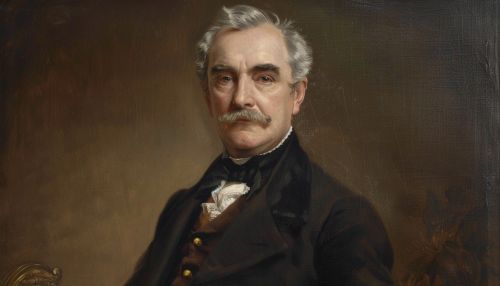Isidore Geoffroy Saint-Hilaire
Early Life and Education
Isidore Geoffroy Saint-Hilaire was born on December 16, 1805, in Paris, France. He was the son of the renowned naturalist Étienne Geoffroy Saint-Hilaire, who was a prominent figure in the field of zoology and comparative anatomy. Isidore grew up in an environment that was deeply immersed in scientific inquiry and natural history, which significantly influenced his future career.
From a young age, Isidore displayed a keen interest in the natural sciences. He pursued his education at the prestigious Collège de France, where he studied under his father's tutelage. His early exposure to the scientific community and rigorous academic training laid the foundation for his future contributions to zoology and teratology.
Academic Career
Isidore Geoffroy Saint-Hilaire began his academic career as an assistant to his father at the Muséum National d'Histoire Naturelle in Paris. His early work focused on the classification and description of various animal species. In 1829, he published his first significant work, "Histoire Générale et Particulière des Anomalies de l'Organisation chez l'Homme et les Animaux," which dealt with congenital malformations and abnormalities in both humans and animals. This work established him as a leading authority in the field of teratology.
In 1832, Isidore was appointed as a professor of zoology at the Muséum National d'Histoire Naturelle. His lectures and publications during this period were instrumental in advancing the understanding of animal morphology and the principles of classification. He also played a crucial role in the development of the museum's collections, particularly in the areas of vertebrate zoology and comparative anatomy.
Contributions to Teratology
One of Isidore Geoffroy Saint-Hilaire's most significant contributions to science was his work in teratology, the study of congenital abnormalities and malformations. His seminal work, "Histoire Générale et Particulière des Anomalies de l'Organisation chez l'Homme et les Animaux," was a comprehensive treatise that cataloged and analyzed various types of congenital anomalies. This work was groundbreaking in its systematic approach to the classification and description of malformations, and it laid the groundwork for future research in the field.
Isidore's approach to teratology was heavily influenced by his father's ideas on the unity of organic composition and the concept of homology. He believed that congenital anomalies could provide valuable insights into the fundamental principles of development and evolution. His work in this area was characterized by meticulous observation, detailed anatomical descriptions, and a rigorous scientific methodology.
Evolutionary Theory and Debates
Isidore Geoffroy Saint-Hilaire was also involved in the early debates surrounding evolutionary theory. Although he did not develop a comprehensive theory of evolution himself, his work on the classification and morphology of animals contributed to the broader scientific discourse on the subject. He was a contemporary of Jean-Baptiste Lamarck and Charles Darwin, and his ideas were influenced by the emerging theories of evolution and natural selection.
Isidore's views on evolution were shaped by his father's concept of "unity of composition," which posited that all living organisms share a common structural plan. This idea was a precursor to the modern understanding of homology and provided a framework for studying the relationships between different species. Isidore's work on teratology and comparative anatomy further supported the idea that variations and anomalies could be explained by underlying developmental processes, which in turn could shed light on the mechanisms of evolution.
Later Life and Legacy
In the later years of his career, Isidore Geoffroy Saint-Hilaire continued to contribute to the fields of zoology and teratology. He published numerous papers and monographs on a wide range of topics, including the anatomy and classification of vertebrates, the principles of natural history, and the study of congenital anomalies. His work was widely recognized and respected by his contemporaries, and he received numerous honors and awards for his contributions to science.
Isidore's legacy in the field of teratology and comparative anatomy is enduring. His systematic approach to the study of congenital anomalies laid the foundation for modern research in the field, and his contributions to the classification and description of animal species have had a lasting impact on the study of zoology. He passed away on November 10, 1861, leaving behind a rich legacy of scientific inquiry and discovery.
See Also
- Étienne Geoffroy Saint-Hilaire
- Teratology
- Comparative Anatomy
- Muséum National d'Histoire Naturelle
- Jean-Baptiste Lamarck
- Charles Darwin


